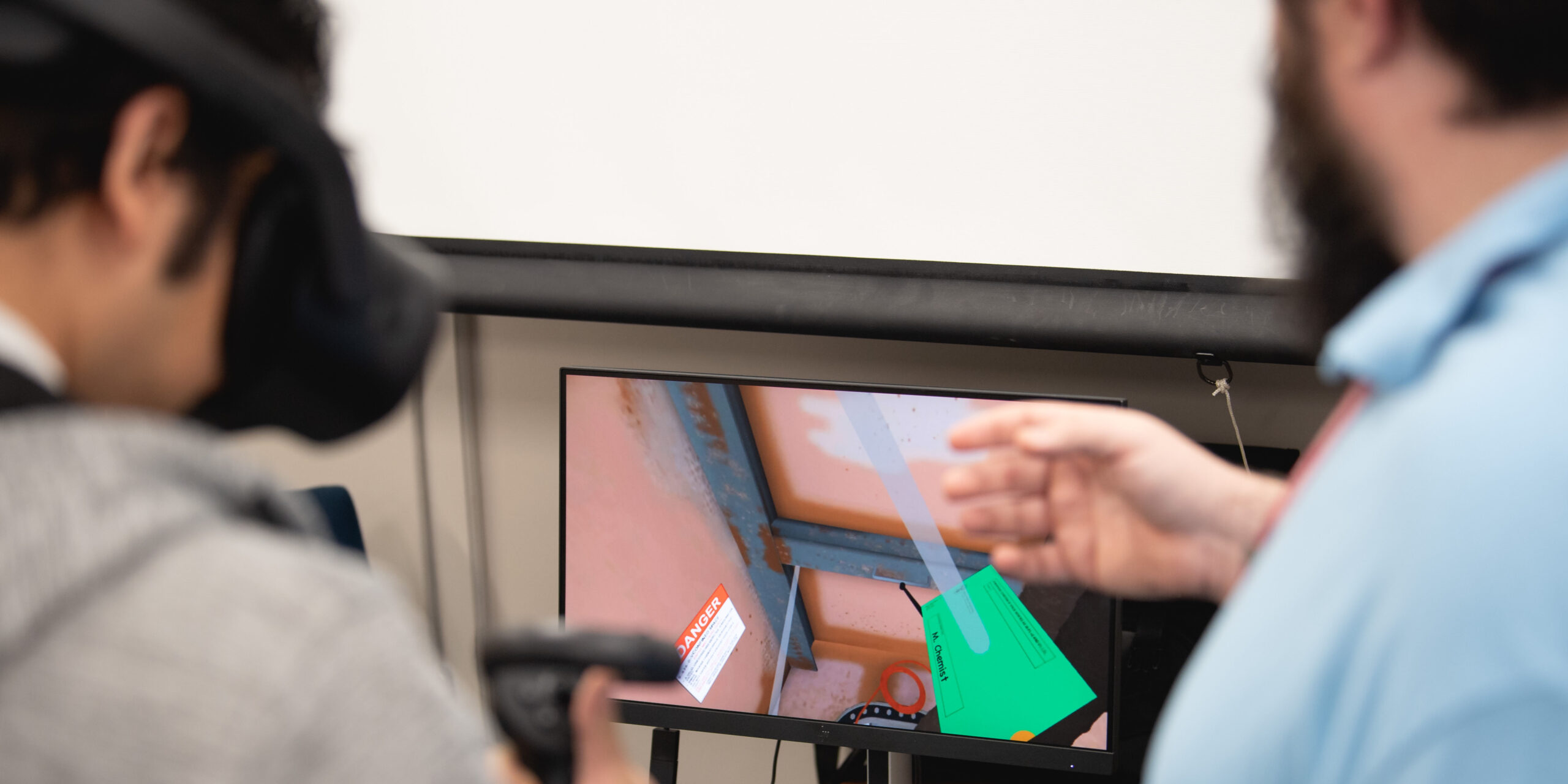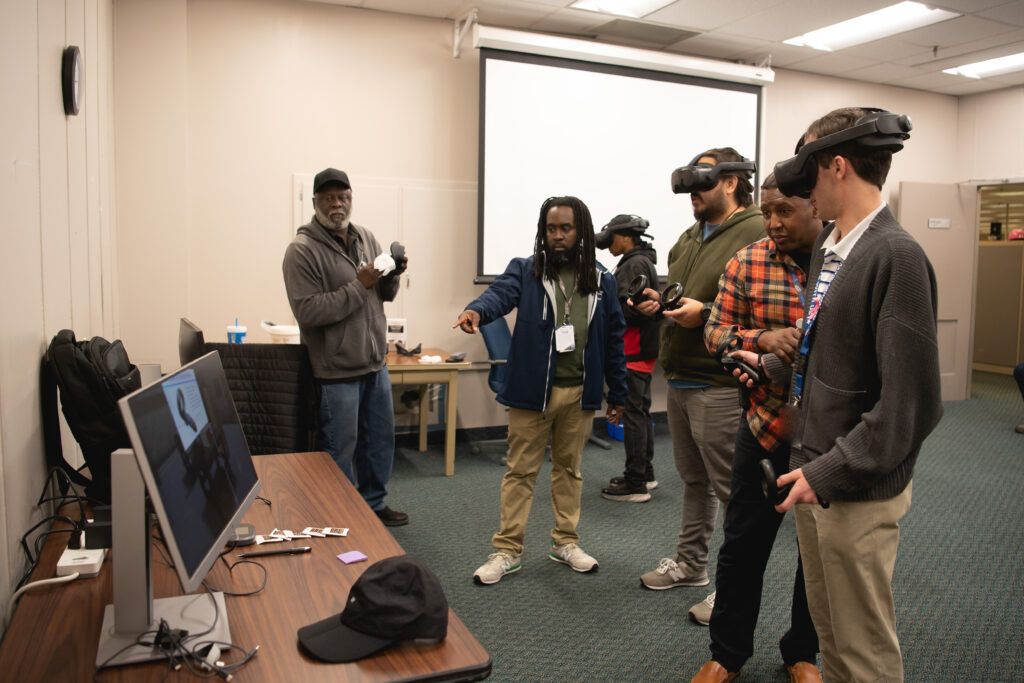 Detecting potential hazards while working in confined spaces was the focus of a recent virtual reality demonstration. Photo by Ashley Cowan
Detecting potential hazards while working in confined spaces was the focus of a recent virtual reality demonstration. Photo by Ashley Cowan Shipbuilders Get Virtual Look at Confined Spaces
Published October 30, 2024
A virtual reality demonstration held last week offered Newport News shipbuilders a safe space to experience work in a confined space, where jobs require a number of safeguards to avoid potential hazards.
A virtual reality demonstration held last week offered Newport News shipbuilders a safe space to experience work in a confined space, where jobs require a number of safeguards to avoid potential hazards.
Thomas Cragg (X71), a construction supervisor, organized the demonstration not only for shipbuilders in his department, which handles refueling and complex overhaul (RCOH) work, but for others. “Shipbuilders will know what ‘right’ looks like while observing work in confined spaces and have the tools to ask the extra question,” he said.
The demonstration was held in Bldg. 600 and made available to employees there. Participants donned headsets and used hand controllers for a 3D experience under the guidance of trainers. They were required to pick up objects and pay attention to equipment tags.
Waverly Kelly (O26), a product trainer, said the virtual environment gives shipbuilders practical, hands-on experience with real scenarios. It also allows the simulation to be populated with any number of hazards, which provides a more robust test and situational awareness.
Examples of confined spaces in the shipyard are tanks, cofferdams, underground sanitary sewage systems, storm drain systems, voids, ventilation trunks and ventilation ducts. Working in these spaces requires proper qualification and authorization, understanding and checks of signs and marine chemist tags, adequate ventilation, lighting, practicing the buddy system (shipbuilder outside the confined space), as well as other protections.
Participants gave the demonstration good reviews.
“You can actually see the environment of the ship, so it’s a lot easier to understand,” said Govinda Arjune, (E70), a mechanical engineer. “I think it’s pretty intuitive.”
Sharron Lockley, a Human Resources business partner, has never been in a confined space, but she provides support to shipbuilders who do this work and appreciates what they do.
“I wanted to understand it,” she said.
The software used in the confined space demonstration is ObserVR and was developed by HII at the Brooks Crossing Innovation and Opportunity Center by Dogfish Labs (E59). For information about training opportunities or to arrange a demonstration, contact Grant Ronquillo [email protected], 757 418-7893.
